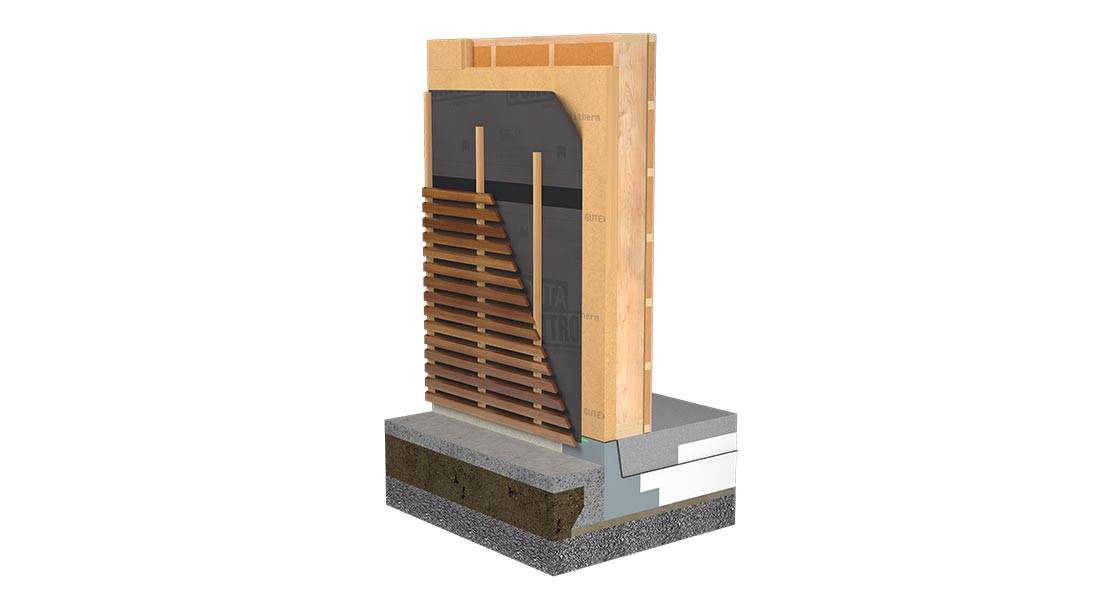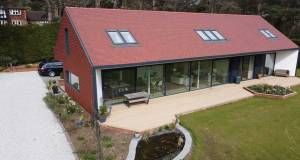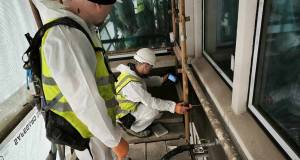
- Marketplace
- Posted
Tackling UK carbon emissions with Passive Ecowall
This article was originally published in issue 46 of Passive House Plus magazine. Want immediate access to all back issues and exclusive extra content? Click here to subscribe for as little as €15, or click here to receive the next issue free of charge
According to The UK Green Building Council (UKGBC), embodied carbon from the construction and refurbishment of buildings is directly responsible for around 20 per cent of built environment emissions and based on current figures, this is likely to be over half of the overall built environment emissions by 2035. These embodied emissions are often regarded as the “carbon blind spot” within the construction industry.
To achieve the UK’s climate ambitions, it is imperative to address both operational and embodied carbon emissions in the built environment.
This entails adopting strategies such as optimising existing buildings, prioritising low carbon materials and designs, and employing energy efficient construction methods.
In response to this challenge, Ecological Building Systems has introduced the Passive EcoWall building solution for new timber frame buildings, which offers exceptional thermal efficiency, exceeding nZEB requirements, and incorporating materials with lower, or even carbon neutral emissions. Passive EcoWall follows proven passive house principles and includes elements like Gutex wood fibre natural insulation, Finsa Superpan VapourStop E-Z airtight racking boards, and the Pro Clima intelligent airtightness system. Several certified passive homes and modular buildings in Ireland and the UK have demonstrated reduced energy consumption and increased comfort through this system.
To exemplify this, a timber frame manufacturer, Lidan Designs, adopted the Passive EcoWall concept for a 200 m² school building in Cork, Ireland, which recently featured in Passive House Plus. This achieved a remarkable embodied carbon score of 249.3 kg CO₂e/m², surpassing targets set by the Royal Institute of British Architects (RIBA) and the 2030 Climate Challenge. The building also received an A+ rating on the Low Energy Transformation Initiative (LETI) scale for its up-front and whole life carbon emissions and hits passive house airtightness levels. Large scale projects like this demonstrate the feasibility of using natural materials, with lower embodied carbon, for high-performance modular buildings in the UK.
Passive EcoWall offers specifiers and designers a comprehensive, unique, “off the shelf” product specification for timber frame construction. The system is supplied with clear, comprehensive detailed drawings focusing on thermal continuity and optimum airtightness and windtightness details. Adopting such construction techniques and natural materials ensures industry can effectively address not only operational emissions, but also embodied emissions, thus playing a pivotal role in the UK’s sustainable building future.
Related items
-
 New Ejot profile cuts thermal bridging losses by 25mm insulation equivalent
New Ejot profile cuts thermal bridging losses by 25mm insulation equivalent -
 Build Homes Better updates Isoquick certification to tackle brick support challenge
Build Homes Better updates Isoquick certification to tackle brick support challenge -
 Ecological Building Systems expands UK and Irish straw panel construction with EcoCocon deal
Ecological Building Systems expands UK and Irish straw panel construction with EcoCocon deal -
 Focus on better buildings, not better spreadsheets
Focus on better buildings, not better spreadsheets -
 MBC offers total passive house envelope solutions
MBC offers total passive house envelope solutions -
 Historic Dublin building retrofitted with cutting edge insulation
Historic Dublin building retrofitted with cutting edge insulation

